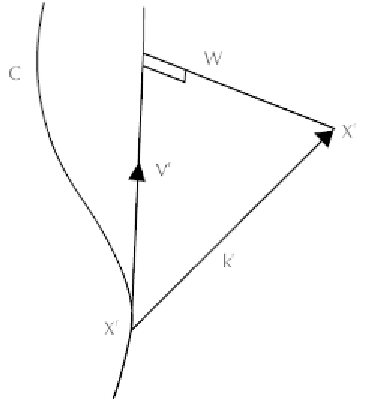Information Technology Reference
In-Depth Information
FIGURE 6.2(B)
Retarded distance from
X
r
to
C
.
The instantaneous distance (see Figure 6.2(a)) introduced by Dirac [8]
is geometrically simpler than retarded distance
w
, (see Figure 6.2(b)) pro-
posed by Bhabha [9] and furthered by Synge [7]; nevertheless,
has the
big disadvantage of not involving retarded effects (light cone); for this
reason,
w
has more physical meaning and leads to simpler calculations
because it intrinsically takes in account the fi nite velocity of interaction.
Here, we will work only with
w
, whose expression is given by the follow-
ing equation:
λ
r
wkv
=−
≥
0
(3a)
r
Bearing in mind that a null vector cannot be orthogonal to a time-like one,
Eq. (3a) points out that
if and only if
(3b)
k
r
=
0
w
=
0
In other words, the retarded distance is zero only when
X
r
is over
C
.
When making calculations, we need to know how diverse quantities
change over
C
when an external event
X
r
varies; for this, it is enough with
having Change's law for
τ
because
x
r
,
v
r
,
a
r
, etc., are functions of this pa-
rameter:
















Search WWH ::

Custom Search